Our special fall crowd-funder is going on now. Please donate today to help EarthSky keep going!
What animal has four legs, a tail and a long trunk? The anteater! The elephant is not the only mammal that can boast a trunk. An anteater stands out with its large tail and elongated snoot. It also has one of the longest tongues in the world. Plus, these animals have an unusual way of eating and getting around. However, don’t be fooled, they are much more agile than they look.
What are anteaters?
Anteaters are mammals that inhabit Central and South America. They live in savannas, grasslands, swampy areas, dry forests and rainforests. Some look for food in open areas, and the rest in areas populated with trees. In fact, they are related to sloths, which live among tree branches.
There are only four species of anteaters in the world. They live between 15 and 20 years.
The giant anteater can exceed 6.5 feet (2 meters) in length and weigh up to 110 pounds (50 kg). It doesn’t climb trees, but rather sleeps curled up on the ground, with its trunk and body well covered by its long-haired tail, as if it was a blanket. If it’s cold, it looks for areas with tall grass or it can sleep in a burrow.
The smallest anteater is the pygmy anteater, which measures about 16 inches (40 cm) and weighs about 1 pound (0.5 kg). It lives and sleeps among tree branches and rarely ever touches the ground.
The southern tamandua and the northern tamandua anteaters live more in trees than on the ground. Of the two, the northern tamandua gets around a little better on the ground.

Not only elephants have trunks
As their name suggests, anteaters love ants and termites. In fact, those two insects are basically the only thing they eat. To reach them, they use their sharp front claws, which are hook-shaped, to open a hole in the nests or in rotten wood.
Once the hole is opened, they insert their long trunks and tongues to eat the insects. The tongue is long and narrow and has tiny spines positioned backwards. What’s more, it is saturated with a thick, sticky saliva that ants and termites stick to when the anteater introduces it into the nest, up to 150 times per minute.
Anteaters must eat quickly, because the ants fight back with painful stings, so they only spend a minute feasting on each mound. In addition, anteaters are smart about their hunting. They never destroy an ant or termite nest, so they can return to them in the future to feed again.
Anteaters eat lots of insects
Anteaters may be intelligent, but their heads are relatively small. However, their trunks can measure up to 24 inches (60 cm) in the biggest species, which is roughly 30% of their body length. Also, anteaters don’t have teeth.
Additionally, the nose and mouth are fused. So, they use their trunks to smell, breathe and eat. Since anteaters don’t see very well, their sense of smell is essential to locating food.
In a sense, they are like living vacuum cleaners. Besides eating from nests, they also tilt their heads towards the ground and sniff and suck any ants and termites that they find. In fact, they can eat up to 35,000 insects a day. Amazing!
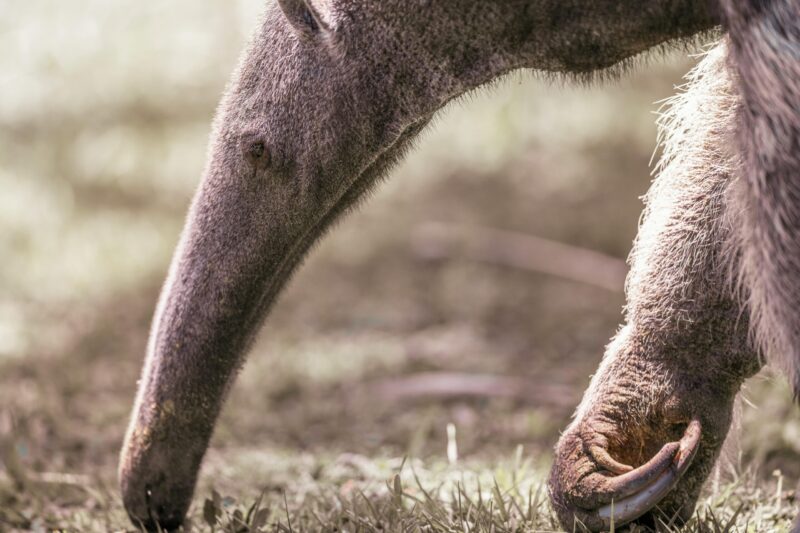
An unusual way of walking
The paws of anteaters also attract a lot of attention. All of them are strong, but the front ones have powerful claws at the end. Other than the giant anteaters, they can easily climb trees. They use their claws to move among tree branches, with help from their tails, since they are flexible and can curl around branches.
Additionally, those that move on the ground don’t walk on their claws, because they face backwards and obliquely. Instead, they walk on the side of their paws, which have a pad, like that of a cat.
Their hind legs have five fingers with nails, so anteaters use their whole back feet soles to walk.
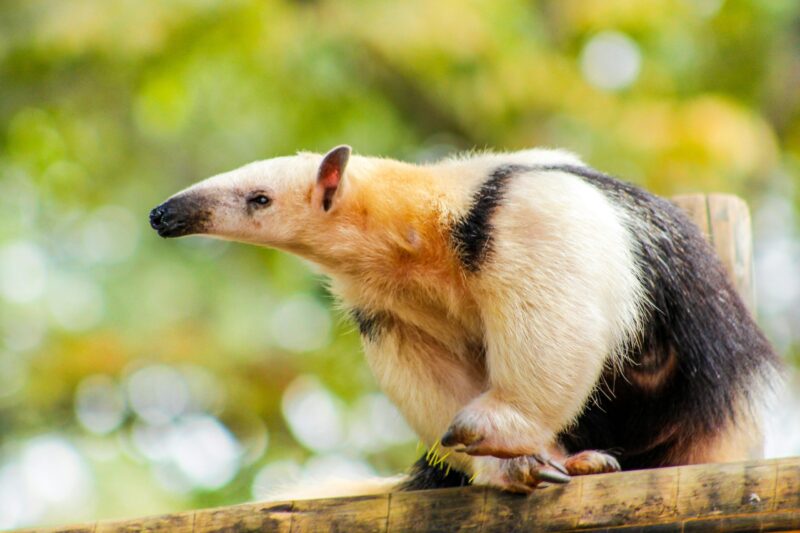
They are peaceful animals
Anteaters are most active at night. However, they will venture out to eat during the day if they are away from civilization. In general, they are peaceful animals that avoid conflict.
They sleep up to 15 hours a day. In fact, they sleep curled up and covered with their tails in secluded places. Giant anteaters can fall asleep instantly out in the open. Yet even pumas and jaguars think twice before attacking them. That’s because giant anteaters have an impressive weapon: 4 inches (10 cm) of strong claws.
Unfortunately, giant anteater pups and other smaller species are more vulnerable. However, their sizes don’t prevent them from defending themselves. Cornered anteaters stand on their hind legs, using their tails to maintain balance, and lash out at their attackers with those dangerous claws. The smallest anteaters have been seen hanging upside down, holding onto branches with their tails, and displaying their claws.
So, tails are important. They are muscular and flexible, with short hair. Giant anteaters, however, have strong, rigid tails densely covered with long, coarse hair.
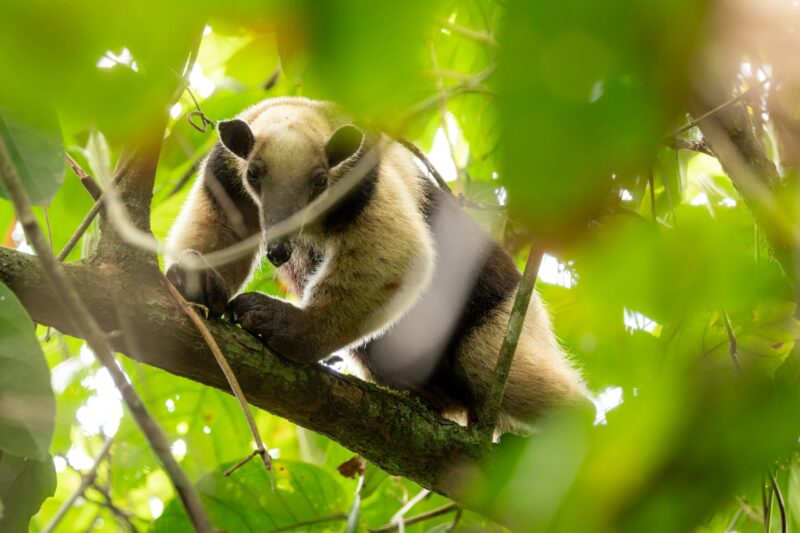
Baby anteaters
Anteaters are quite solitary and mate once or twice a year. Females typically have a single pup, which they gestate for approximately 190 days, ensuring that it is well equipped for survival.
Immediately after birth, the baby anteater clings to its mother’s back and remains there for about a year.

Other anteater facts
Anteaters have a highly developed sense of smell, up to 40 times stronger than humans.
Their consumption of ants and termites in a single day plays a crucial role in regulating insect populations.
Their slow metabolism allows them to extract maximum energy from their prey, essential for survival in food-scarce environments.
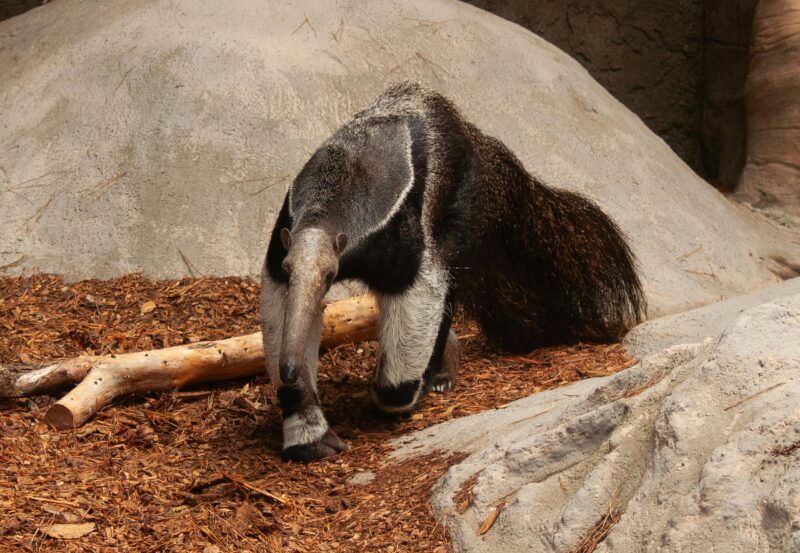
They can move around their environment with surprising agility and are good swimmers.
Anteaters communicate through scent marking and they can emit a high-pitched, shrill grunt.
They are related to armadillos.

Claudio Consonni/ iNaturalist (CC BY-NC 4.0).
More photos
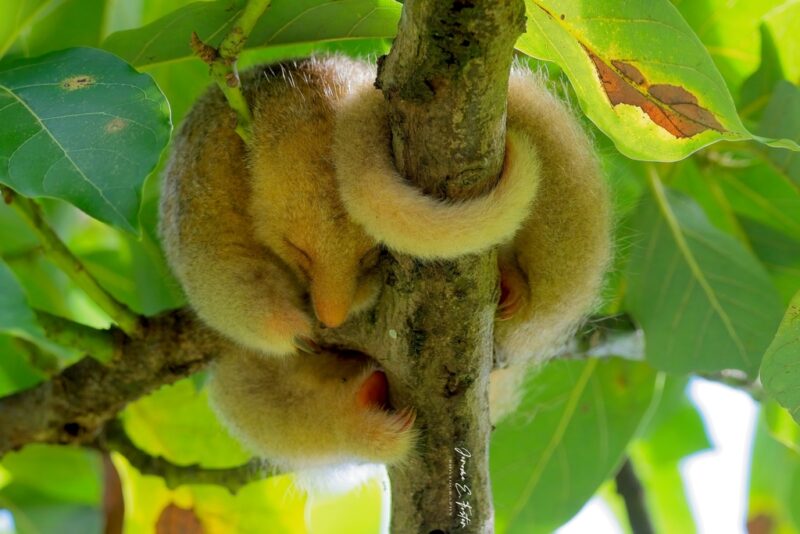
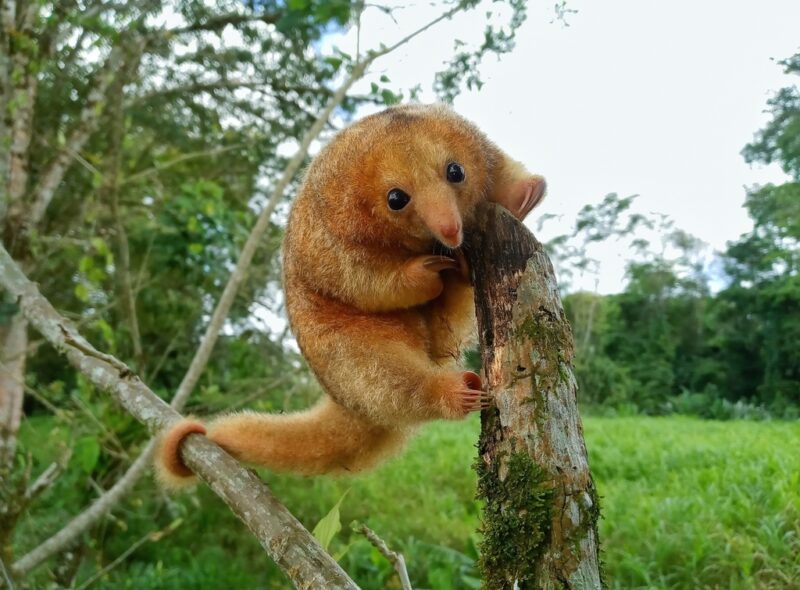
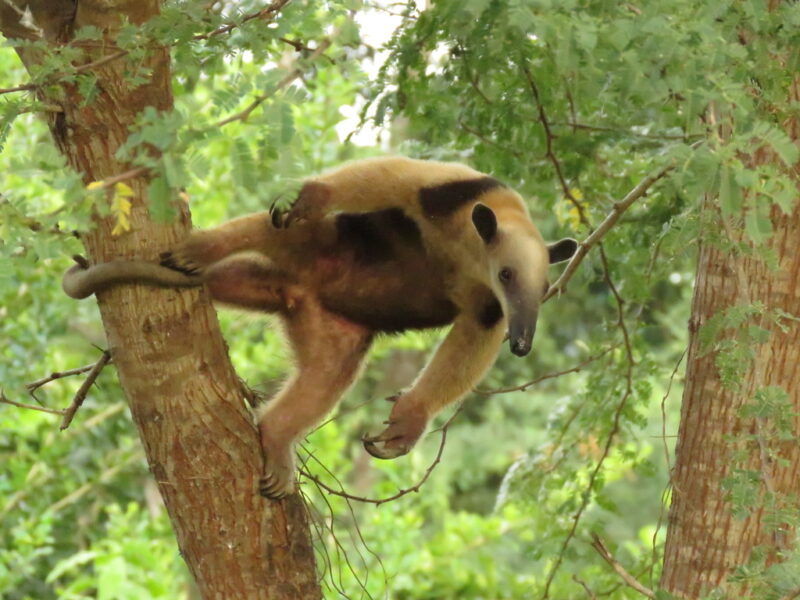
Bottom line: Anteaters are known for their vacuum-like feeding habits, using their long trunks and tongues to consume up to 35,000 ants and termites daily. They have strong claws and flexible tails, which help them navigate their environments.











